What Your Cravings Say About Your Neurotransmitters
Ever wondered why you can resist candy but melt at the sight of a warm loaf of bread…
Or why you crave deep hugs more than sugar during stressful weeks?
Your cravings — both on the plate and off — are messages from your brain.
And often, they’re tied to neurotransmitters like dopamine and serotonin.
Let’s unpack this a bit deeper.
???? Meet Your Neurochemical Messengers
Your body is always trying to balance itself, and your brain uses chemical messengers (neurotransmitters) to regulate things like:
- Mood
- Motivation
- Focus
- Sleep
- Cravings
- Emotional regulation
Two of the most important players in the craving conversation are dopamine and serotonin.
???? Dopamine Deficiency Cravings:
“I need a reward… now.”
Dopamine is your pleasure + motivation chemical. It’s what drives your desire to do the thing and feel good about it.
When dopamine is low, you may feel flat, unmotivated, or like you’re constantly chasing a high but never getting there.
Common dopamine cravings:
- Sugar (especially sweets)
- Caffeine
- Chocolate
- Risky behaviors (scrolling, spending, gambling)
- Praise and performance
- “One more episode…”
Nourishing dopamine (on & off the plate):
- Tyrosine-rich foods: eggs, pumpkin seeds, beans, lentils
- Dark chocolate (contains phenylethylamine, a dopamine booster)
- Accomplishing small goals
- Cold exposure + sunlight
- Exercise with a challenge (like dance, strength training, or HIIT)
If you’re truly low and once you get tested, we can look at your precursors, cofactors and enzymes. Methylation pathways or other factors may be at work and we can supplement/support accordingly.
???? Serotonin Deficiency Cravings:
“I need comfort and connection.”
Serotonin is your peace + contentment neurotransmitter. It helps you feel safe, relaxed, and emotionally stable.
When serotonin is low, anxiety, depression, irritability, and sleep troubles can appear — and your brain may search for quick comfort.
Common serotonin cravings:
- Bread, pasta, carbs
- Cheese (contains casomorphins which mimic opioids)
- Potatoes
- Warm drinks (tea, milk)
- Touch, hugs, bonding, nature
Ways to boost serotonin:
- Tryptophan-rich foods: turkey, oats, bananas, seeds
- Sunlight or nature walks
- Deep connection (20+ second hugs increase oxytocin too!)
- Gratitude journaling
- Gut support — 90% of serotonin is made in your gut!
???? It’s Not Just Willpower — It’s Chemistry
If you’ve been on a restrictive or under-nourishing diet, have methylation issues, a history of trauma, or under chronic stress, your neurotransmitters may be out of balance.
Gut issues, mold, trauma, candida, and MTHFR mutations can all deplete dopamine and serotonin.
Cravings are often your body’s way of trying to restore homeostasis — not just a lack of discipline.
???? What Can You Do?
- Get curious about your cravings.
- Ask: Am I needing reward, comfort, connection, or peace?
- Notice if you’re chasing dopamine (energy/motivation) vs serotonin (calm/safety).
- Nourish both pathways intentionally.
- Add mood-supportive foods + nutrients.
- Support your gut and mineral status — both are required for neurotransmitter synthesis.
- Test your levels.
At Modern Medicine, we offer Neurotransmitter + Adrenal Testing that shows your body’s biochemical needs and stress patterns. It’s incredibly validating — and helpful in crafting your custom plan.
???? Final Thoughts
Your brain is wise — it’s constantly signaling what you need.
When you learn to listen to cravings through the lens of functional nutrition and emotional intelligence, you stop fighting your body and start supporting it.
That sweet tooth might just need magnesium, or it might need a long hug.
That bread craving might be your gut asking for serotonin support.
✨ You’re not broken. Your body is communicating. Let’s tune in together.
Jade Green, TNC, CHHC

